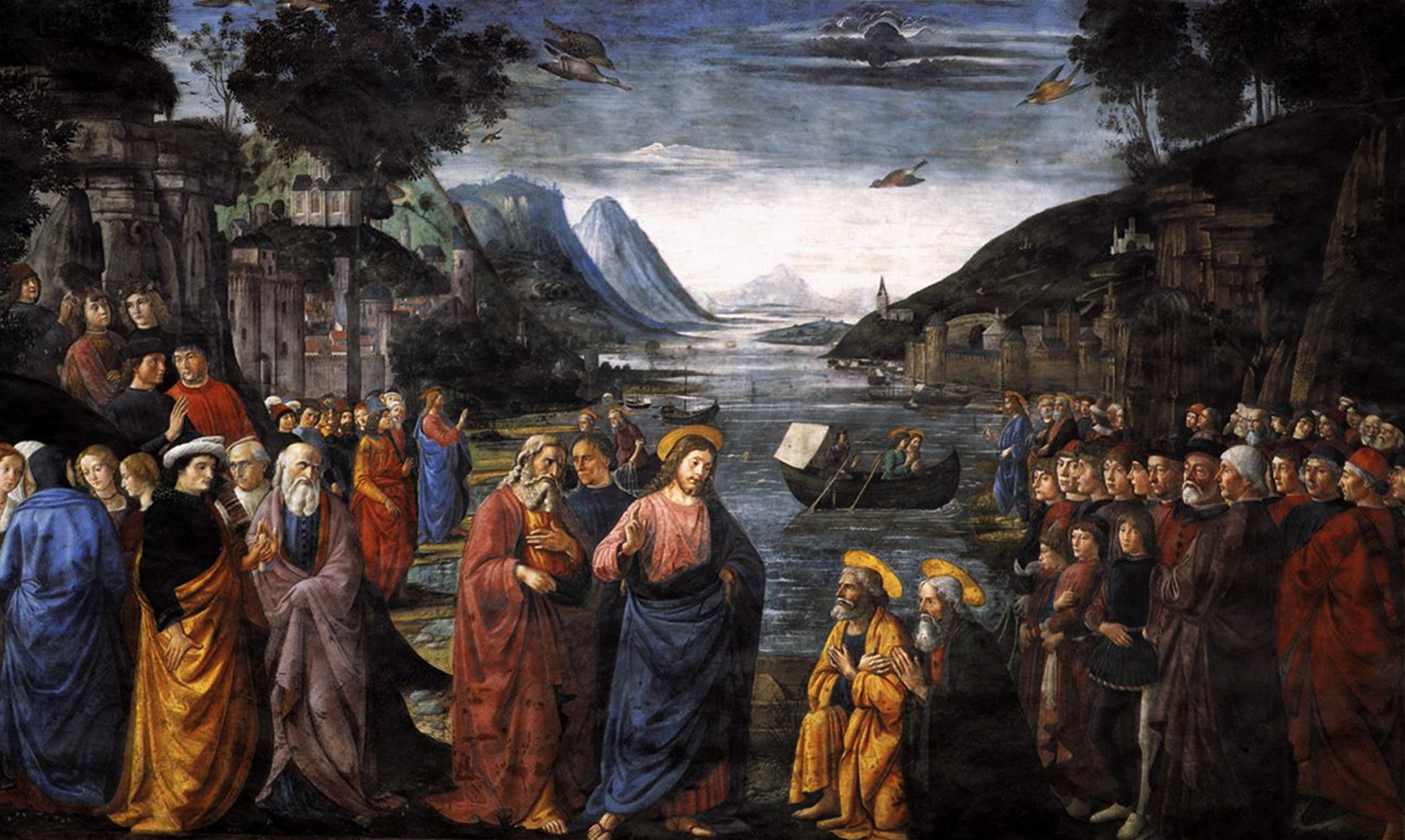A Kingdom Divided
10th Sunday in Ordinary Time (B)
There is an old adage: A Kingdom divided cannot stand. This truism originates with the words of Jesus spoken in this Sunday’s gospel reading. The scribes are accusing Jesus of driving out demons with the power of demons. Jesus points out that this would be foolish.
“How can Satan drive out Satan? If a kingdom is divided against itself, that kingdom cannot stand. And if a house is divided against itself, that house will not be able to stand. And if Satan has risen up against himself and is divided, he cannot stand; that is the end of him (Mk 3:23-26).
It is true. Division brings weakness, whether we are talking about earthly kingdoms, the demonic kingdom of Satan, or the eternal Kingdom of God.
History is full of examples of human societies collapsing in on themselves due to division and infighting. One of the most troubling things about American politics today is that it has become so divisive, a constant battle of Us vs. Them played out on 24-hour news channels and social media. The primary goal of either party seems to be getting the other one out of power. It doesn’t matter any more what you stand for; just so long as you stand against the other guy.
College students are not immune to partisan politics. According to a recent survey, 35.5% of college freshmen identified with “far-left” ideology, with 22.2% considering themselves “far-right.” This means, however, that over 40% consider themselves non-partisan. In my own experience, even those who consider themselves liberal or conservative often do not identify with either of the major political parties. They have become cynical about what they view as an ineffective system. One wonders just how long the system will stand if things continue to progress down this road.
Divisive politics even affects people’s relationships and sense of well-being. I’m sure you’ve noticed how the tension in a room increases whenever a politician’s name is brought up in conversation. People think, “Oh no, we are talking politics.” Eyes glance nervously around the room in case anyone from “the other side” might take offense.
I only go into all of this as a counter-point. We see how divisiveness acts as a cancer in our political system. It is equally cancerous in the Church. The kind of divisiveness I have in mind is not just a difference of opinion. It is more than a disagreement. Differences can be enriching. Disagreements can be topics for fruitful discussion and mutual movement toward truth. But divisiveness prevents these things by breaking down relationships.
The primary consequence of original sin is a disruption of relationship. Not only was man’s relationship with God broken, but so was his relationship with creation, his relationship with fellow man (especially between the sexes), and the relationship between the body and the soul, leading to concupiscence and death (see the Catechism of the Catholic Church, 400). Ever since the Fall, man has been suffering from division. We see this on display in our first reading from Genesis, which takes place immediately after Adam had eaten of the tree. We find Adam attempting to hide from God, because their relationship was now broken. Then we see Adam blaming Eve for his sin, because his relationship with her was broken, as well. He stubbornly refuses to take responsibility for his own actions, being divided now even within himself.
Christ came to heal all of this division. This was his great prayer in the Garden of Gethsemene: “Father, may they be one as you are in me and I am in you (Jn 17:21).” Christ’s will is for unity among his flock. Division in the world is sad, but not surprising. Division within the Church, however, is scandalous.
One of my biggest pet peeves is when people use the terms “conservative Catholic” or “liberal (or progressive ) Catholic” to describe someone. These are not terms that belong in the Catholic Church. These are American political labels that are misused and misapplied in a Catholic context. Every Catholic should be conservative in the sense that we wish to conserve and pass on the truths of the Apostolic faith. And every Catholic should be liberal in the sense that we wish to liberate people from their sins and help them find the freedom God offers to live a truly holy life. But in the sense these terms are understood in the context of American politics, they have no place in the Catholic Church.
So why do people use them? They provide us with a convenient short-hand. A “conservative Catholic” is one who likes Latin, organ music, fancy vestments, and strictly upholds the Church’s moral teachings, especially about sexuality. A “liberal Catholic” is one who prefers the vernacular, likes guitars and drums at Mass, and thinks the Church should “update” her moral teachings, especially about sexuality. But these are just stereotypes, and they are all too often wrong. Labeling someone this way only gives us an excuse not to get to know them as a person. It’s judgmental, and we need to stop doing it.
Because there is no such thing as a “liberal” or “conservative” Catholic. One can be a good Catholic or a bad Catholic to the extent that one is or is not making an attempt to live the faith. One can be an orthodox (literally right-thinking) Catholic or a heterodox (wrong-thinking) Catholic depending on whether or not one agrees with Catholic doctrine. One is of course free to agree or disagree with the Church’s teachings; but one is not free to make up one’s own faith and call it “Catholic.” The Catholic religion is what it is.
This does not mean the Church is monolithic. In fact, there is great variety in the Catholic Church when it comes to worship, piety and customs. Different cultural groups around the world have their own liturgical Rites which they follow. In the west, most Catholics are Roman (or Latin) Catholics and so follow the Latin Rite. But there are many Eastern Catholics who worship according to the Byzantine Rite, the Coptic Rite, the Maronite Rite, and so forth. Each of these different Rites has a distinct way of worshiping that is quite different than what western Catholics are used to. They have different customs and disciplines. Yet they are united in the one Catholic Church, joined together in one faith, celebrating the same sacraments, in union with the same Pope. Despite their different modes of expression, they are part of the same Body, the Church.
Within the Latin Rite we have what are called the Ordinary Form and Extraordinary Form of the Mass (also called the Novus Ordo and the Tridentine Mass). Both are legitimate expressions of the same faith. And even within the Ordinary Form of the Mass, depending on what parish you attend you may experience Mass in Latin, English, Spanish, Vietnamese, Hmong, or some other language (or a mixture).
An urban African-American Catholic parish is going to have very different music than a rural parish with a large Hispanic immigrant population. That’s to be expected.
Your priest may say Mass facing the people, or facing the altar. You may sing traditional hymns or more contemporary praise music. You might receive Communion standing or kneeling. That’s all fine. These are all legitimate ways of expressing the same faith.
The Church gives us great freedom to express our faith in different ways. But we are not free to make up our own version of the faith. The Catholic faith is something we receive, not something we create. If we disagree with the Church, we are free to leave. Or we are free to stay and struggle with our reasons for disagreement. But the one thing we can’t do is redefine Catholicism on our own terms.
Other churches have been down that road. It only leads to further division. Consider all the many Protestant denominations. We are used to thinking of Baptists and Methodists, Lutherans, Episcopalians, Pentecostals and so forth. But within each of these umbrella groups is a myriad of different denominations, each of which originated when a split happened because of a difference in doctrine or practice, resulting in thousands of different micro-denominations. Each split is another move away from unity. And historically, when these splits happened, one side has often been viewed as “conservative” and the other as “liberal.”
One thing I’ve noticed over the years is that it tends to be mostly older Catholics who identify themselves or others as “liberal” or “conservative” Catholics. Most Catholic college students I work with simply wish to be Catholic. This gives me great hope for the future of the Church.
So my message for my students, and anyone else reading this blog, is to be wary of anyone who promotes division within the Church. Avoid blogs, podcasts and other media outlets that focus on the “conservative” and “liberal” division within the Church. Ignore all of that. And just focus on being a good Catholic — one who takes the faith seriously, and attempts to put in into practice as best you can. Don’t try to be a conservative or a liberal Catholic. Try to be a faithful Catholic. Because that’s the kind who become saints.

